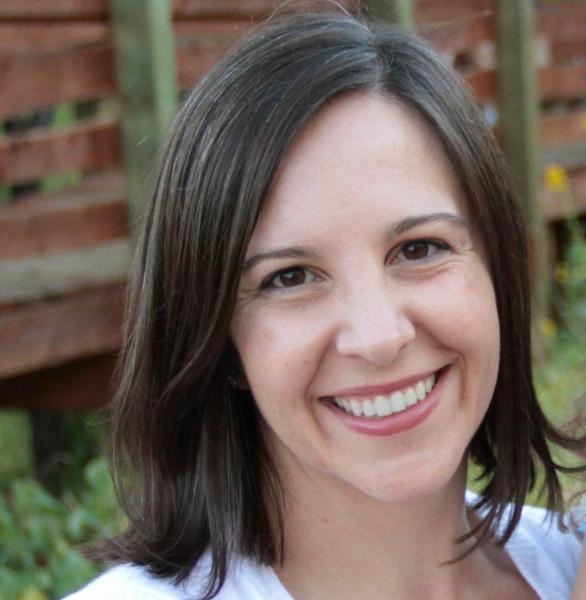- About Archives
- About SAA
- Careers
- Education
- Publications
- Advocacy
- Membership

Professional Experience: Director, Special Collections, University of Nevada, Las Vegas, 2013–present. Head of Special Collections, Archives, and Digital Scholarship, University of California, Irvine, 2008–2013. Archivist, University of California, Irvine, 2007–2008. Head of Special Collections Technical Services, University of Washington, 2005–2007. Assistant Archivist, Northeastern University, 2001–2004. Project Archivist, Manuscripts and Archives, Yale University, 1999–2001.
Education: MS, Information (Archives and Records Management), University of Michigan, 1999. MA, History, University of Michigan, 1997. BA, History, University of Oregon, 1995.
Professional Activities: Society of American Archivists: Council, 2012–2015. The American Archivist Editorial Board, 2008–2012. Technical Subcommittee for Descriptive Standards, 2007–2008. Description Section Newsletter Editor, 2005–2008. 2006 Program Committee, 2005–2006. Boston Host Committee, 2003–2004. Key Contact Representative, 1999–2001.
Publications: “Controlling Goods or Promoting the Public Good: Choices for Special Collections in the Marketplace,” RBM 16:1 (2015). “Managing Risk with a Virtual Reading Room: Two Born Digital Projects,” Reference and Access Innovative Practices for Archives and Special Collections (Rowman, 2014). “Moving Beyond the Name: Defining Corporate Entities to Support Provenance-Based Access,” Journal of Archival Organization 5:1‒2 (2007). “Evidence of Sanctity: Record-keeping and Canonization at the Turn of the 13th Century,” Archivaria 60 ( Fall 2005). Co-authored with Tom Hyry, “Colophons and Annotations: New Directions for the Finding Aid,” The American Archivist 65 (Fall/Winter 2002).
Presentations: “The Evolving Archival Record” Discussion, SAA (2015). “Archival Education” Discussion, SAA (2014). “Special Collections in the Marketplace,” RBMS Pre-Conference (2014). “Born Difficult?” OCLC Research Partners Meeting (2013). “The UC Guidelines for Processing Efficiently,” Society of California Archivists (SCA) (2013). Designing a Born-Digital Archive,” SAA (2010). “The Endangerment of Trees,” EAD@10, RLG and SAA (2008). “Preservation for the Household Archivist,” multiple venues (2007‒2009). “Implementing the Archivists’ Toolkit,” SCA (2008). “Implementing Describing Archives: A Content Standard,” SCA (2007 and 2008). “Functional Appraisal for University Records at Yale,” SAA (2001). “Putting Provenance to Work: Capturing, Recording, and Delivering Contextual Description at Yale,” SAA (2000).
* * *
Question posed by Nominating Committee:
SAA is a member-governed organization that is composed of dozens of constituent groups with a variety of viewpoints. In recent years, SAA’s governance structure has strived to be more transparent and responsive in addressing member concerns. If elected, how would you help insure that Council continues on this path and represents the broad interests of our diverse profession in a transparent manner?
Candidate's Response:
SAA’s governance processes are there to ensure members’ voices can be brought forward for consideration. Sometimes, it’s confusing how this happens, but that’s one important role of a Council member—to serve as a sherpa. As an organization, SAA strives to be agile, responsive, inclusive, and participative so that it can act responsibly in the best interests of its members, the profession, and the archival record. Success often depends on members with diverse interests and backgrounds communicating and/or assuming leadership roles to launch, shape, or check initiatives.
As a former Council member, I was most proud of our work, and the work of component groups, when we made multiple efforts to share proposals with members, gather feedback, revise proposals, gather more feedback, and revise again. I deeply appreciated those who submitted thoughtful comments, started conversations on listservs, or talked to leadership directly. The best work coming out of SAA represents many talents. But sometimes, I was disappointed in how few participated.
It’s rare to get do-overs in life, but if re-elected for another year on Council, I would push harder for member engagement. First, I would encourage Council to continue to publicize opportunities for member feedback in multiple venues to ensure we reach and listen to diverse perspectives. Second, I would work closely with leadership of sections, roundtables, and other groups to gather their representative opinions and to coach them on engaging their members effectively. Third, I would help groups understand how they might identify issues of concern and craft them to bring forward to Council. Finally, I would look for opportunities to cultivate new leaders to help spread engagement across the organization.
Reflecting on my past service on Council, I would describe myself as a measured, thoughtful voice that seeks to position SAA strongly for the future. I was guided by SAA’s mission, vision, values, and strategic plan in my deliberations, and often helped the group find a path forward after listening to and synthesizing divergent viewpoints. I won’t be the one to make radical changes, but will remain committed to finding feasible ways for SAA to advocate for archivists and archives, support professional growth, advance our professional knowledge, and engage our members.
Slate of Candidates |
The Nominating Committee has slated the following SAA members as candidates for office in the 2016 election: